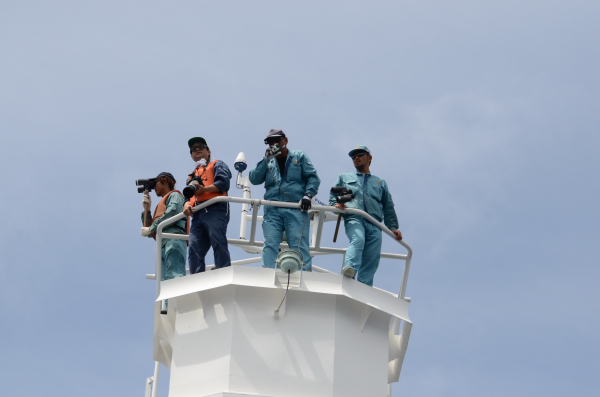The sixth IWC-POWER research cruise sets sail
The IWC-POWER cruise has now left Shiogama, embarking on a 60-day survey of cetaceans in an area of the North Pacific which has not been studied for decades. This year’s cruise will focus primarily on the abundance and stock structure of Bryde’s whales. It will also seek to establish baseline information on distribution, stock structure and abundance for other species in the region, and involves scientists from the USA and Britain, as well as Japan which also generously provides the vessel and crew.
IWC-POWER (Pacific Ocean Whale and Ecosystem Research) is a long term programme which is expected to run for more than 10 years. Detecting trends in numbers of long-lived animals such as whales takes a long time. The overall objective is to provide information which will allow scientists to determine the status of populations of the large whales found in North Pacific Waters.
This North Pacific programme follows similar research in the Southern Ocean. SOWER (Southern Ocean Whale and Ecosystem Research) and its predecessor IDCR (International Decade for Cetacean Research) together represent 32 consecutive years of research into whale abundance in the Antarctic, with Japan providing both vessels and crew throughout.
Collaboration is fundamental to the success of the programme. In addition to the major contribution of Japan, the scientists’ expenses and specialist equipment are funded by the IWC. So far scientists from Japan, the Republic of Korea, the USA, the UK and Mexico have participated in the fieldwork. In addition, scientists from Australia and Europe are members of a specialist IWC-POWER steering group.
The duration of each cruise is approximately 60 days. This is the maximum operational period of the vessel before refueling and resupplying is necessary. By the time the vessel has travelled to and from the area of study, approximately 35-45 days remain for research. The scientists on board work from one hour after sunrise to one hour before sunset, making the most of the opportunity and the daylight. Between 70 and 90 nautical miles are covered each day that the vessel is in the research area.
The POWER cruises also work to address wider objectives, for example, collecting data on marine debris that contributes towards modelling the predicted movement of marine debris from the 2011 Tsunami.
Click here to be taken to the IWC-POWER image gallery.

